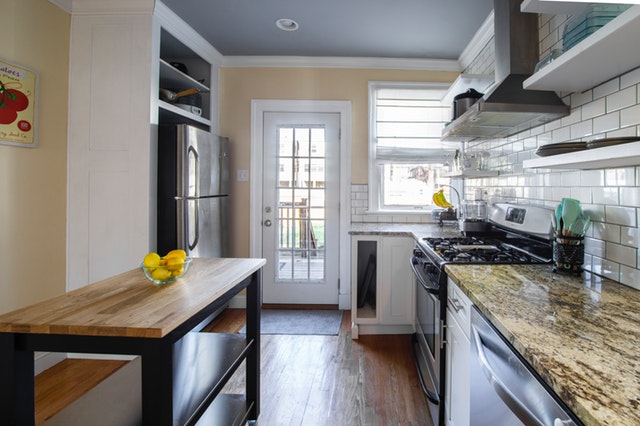 Have you ever played the classic board game called Monopoly? The object of the game is to collect all the properties until one winner bankrupts all the other players. The other part of the game is that accumulating properties adjacent to each other increases the value of the individual properties. When a player acquires all the properties of the same color (two or three), then the rents go up and property development can begin.
Have you ever played the classic board game called Monopoly? The object of the game is to collect all the properties until one winner bankrupts all the other players. The other part of the game is that accumulating properties adjacent to each other increases the value of the individual properties. When a player acquires all the properties of the same color (two or three), then the rents go up and property development can begin.
The Monopoly Game In Real Life
The same basic principles sometimes work in real life. Owning a property and then buying the one next door creates a value-added possibility of the combined properties being worth more than the individual pieces.
To start this strategy, tell the neighbors of having an interest in buying their home in the future if they want to sell. This is a way to get the first option to buy a home before it lists on the market.
Control Of The Neighbors Adds Value
In many neighborhoods, there is one home that creates severe negative pressure on property values. These homes may be neglected and badly needing a paint job and landscaping. The home may be a source of neighborhood noise problems or heavy traffic.
When considering buying into this neighborhood, make a plan to buy the derelict house. Then, before bringing it back into a marketable condition, there may be a chance to buy the ones next door for a steep discount from the market value.
If possible, buy all the properties at once and close them around the same time. This helps avoid triggering a profit demand from those who are opportunistic and learn about the interest of a buyer in more than one property.
Cashing Out
If possible, buy three houses, one of each side of the derelict house, then renovate all three properties. Make them into rental units or to sell them as a “flipped” property after the renovation for a big profit.
If there is the possibility of controlling a full block on both sides in a rundown neighborhood, it is possible to start with one block of home improvements at a time. Entire neighborhoods may improve one block at a time.
Redevelopment
In some neighborhoods, there is a chance of re-zoning and redevelopment. For example, it may be possible to build a larger structure by combining two properties. There is profit possible in assembling the land for redevelopment purposes, even for those who do not do the construction for the redevelopment.
Summary
Playing Monopoly in real life can make investing in real estate fun. It is possible to start with a few low-cost rental homes. For rental properties, it makes it much easier to manage them if they are next to each other. Values may increase in the neighborhood by the renovation of a derelict house.
If you are intested in listing your current property or in the market for a new home, be sure to contact your trusted real estate professional!
 The most expensive home sold in America, so far, was a New York penthouse that sold for $238 million in January 2019. It is on the top of a building that overlooks Central Park. The 26-story luxury condo building designed by Robert A. M Stern is nearly all sold out.
The most expensive home sold in America, so far, was a New York penthouse that sold for $238 million in January 2019. It is on the top of a building that overlooks Central Park. The 26-story luxury condo building designed by Robert A. M Stern is nearly all sold out. For market value and the comfort of a home’s occupants, home security is just as important as energy-efficiency. Innovation in smart home technology focuses on both of these areas.
For market value and the comfort of a home’s occupants, home security is just as important as energy-efficiency. Innovation in smart home technology focuses on both of these areas. After the children are all grown and moved out, the family home often feels excessively large and empty. If you’re in this stage of life, you may be wondering if you should downsize like so many others, or stay put. Downsizing may be the best option, depending on your lifestyle.
After the children are all grown and moved out, the family home often feels excessively large and empty. If you’re in this stage of life, you may be wondering if you should downsize like so many others, or stay put. Downsizing may be the best option, depending on your lifestyle. As you come up to the date of your closing, there’s time to reflect on everything that led to this step. Your real estate agent, mortgage broker, title company and others all work hard to ensure a successful closing for you. They’re all in your corner, hoping for the same outcome as you. They’ve had to do a lot of work behind the scenes that you may not even be aware of. Their diligence and professionalism has already benefited you.
As you come up to the date of your closing, there’s time to reflect on everything that led to this step. Your real estate agent, mortgage broker, title company and others all work hard to ensure a successful closing for you. They’re all in your corner, hoping for the same outcome as you. They’ve had to do a lot of work behind the scenes that you may not even be aware of. Their diligence and professionalism has already benefited you. Home staging means getting a home ready for sale with the goal to maximize the sale price and close a sale as fast as possible. Some home staging tasks are very dreary, like having to get the place sparkling clean. That is really not fun work. It may be better, if it is affordable, for the homeowner to hire professionals to do that grunt work.
Home staging means getting a home ready for sale with the goal to maximize the sale price and close a sale as fast as possible. Some home staging tasks are very dreary, like having to get the place sparkling clean. That is really not fun work. It may be better, if it is affordable, for the homeowner to hire professionals to do that grunt work. One of the best things about moving into a new home is personalizing it and really making it yours. From hanging wall art to arranging furniture to finding the perfect spot for your grandmother’s hand crocheted afghan, it’s a real joy to decorate.
One of the best things about moving into a new home is personalizing it and really making it yours. From hanging wall art to arranging furniture to finding the perfect spot for your grandmother’s hand crocheted afghan, it’s a real joy to decorate. 3D printing technology is a game-changer in the home construction business. Not only is the technology capable of printing a home, but it can also be used to print one at a much lower cost when compared to traditional home construction.
3D printing technology is a game-changer in the home construction business. Not only is the technology capable of printing a home, but it can also be used to print one at a much lower cost when compared to traditional home construction. If you’re selling your home, your real estate agent has likely advised you to stage your home to sell. But why exactly do people stage homes to sell? Some people go to great lengths to stage their home too, even going so far as moving possessions into storage units or renting furnishings!
If you’re selling your home, your real estate agent has likely advised you to stage your home to sell. But why exactly do people stage homes to sell? Some people go to great lengths to stage their home too, even going so far as moving possessions into storage units or renting furnishings! As a diligent home seller, you’ve taken all your real estate agent’s advice about preparing your home for showings. You’ve de-cluttered, enhanced curb appeal and developed efficient strategies for leaving your home while viewings are taking place.
As a diligent home seller, you’ve taken all your real estate agent’s advice about preparing your home for showings. You’ve de-cluttered, enhanced curb appeal and developed efficient strategies for leaving your home while viewings are taking place.